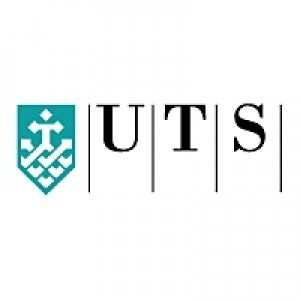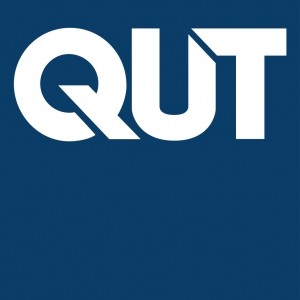Work Health and Safety is a comprehensive qualification offered by Chisholm Institute that prepares students to develop and implement effective health and safety procedures in various workplace settings. This program provides essential knowledge and practical skills to ensure the safety and well-being of employees, managers, and other stakeholders across diverse industries. Throughout the course, students explore key topics such as hazard identification, risk assessment, incident investigation, compliance with national safety legislation, and the development of workplace safety management systems. The curriculum is designed to equip learners with the ability to promote a safety culture within organizations, effectively communicate safety policies, and lead initiatives aimed at minimizing workplace injuries and illnesses.
Students will engage with real-world scenarios and case studies to understand the complexities of Occupational Health and Safety (OHS) management and learn best practices for creating safe working environments. The program emphasizes the importance of regulatory compliance, ethical responsibilities, and proactive safety planning. Practical assessments, group projects, and industry placements allow students to apply their theoretical knowledge in hands-on situations, reinforcing their ability to manage safety risks effectively.
Graduates of this program will be qualified to work in roles such as safety officers, health and safety coordinators, compliance advisors, and occupational health and safety representatives. They will possess the capability to develop safety policies, conduct risk assessments, facilitate safety training, and ensure organizations meet legislative requirements. This qualification aligns with national standards and best practices, positioning graduates to make meaningful contributions to workplace safety initiatives.
Chisholm Institute's Work Health and Safety program reflects industry demands for competent safety professionals who can foster a safety-first culture and respond effectively to workplace hazards. The program’s flexible delivery options include face-to-face, online, and blended learning formats, catering to diverse student needs and schedules. Enrolling in this course offers a pathway to a rewarding career centered on protecting lives, promoting well-being, and ensuring compliance with Work Health and Safety laws in Australia.
The Work Health and Safety program at Chisholm Institute is designed to equip students with comprehensive knowledge and practical skills essential for ensuring safety and compliance in various workplace settings. This program covers a broad range of topics, including hazard identification, risk assessment, and the implementation of effective safety measures to protect workers and employers alike. Students will learn about the legal responsibilities associated with workplace health and safety legislation, gaining a thorough understanding of the duties and obligations under relevant laws and standards. The curriculum emphasizes the development of strategic safety management plans, accident and incident investigation techniques, and the creation of a safety-conscious workplace culture.
Throughout the course, learners will explore essential topics such as hazard control measures, emergency response procedures, and the importance of promoting health and wellbeing in the workplace. Practical skills are a core component, enabling students to undertake safety audits, use protective equipment correctly, and communicate safety concerns effectively. The program also prepares students to implement training programs and support organizational safety initiatives, fostering an environment where safety is prioritized and ongoing improvement is encouraged.
Chisholm’s Work Health and Safety program incorporates real-world scenarios and case studies to ensure students are ready to handle actual workplace challenges confidently. The program is suitable for those seeking careers in safety management, occupational health and safety coordination, or looking to enhance their existing roles with specialized safety expertise. Upon successful completion of the course, graduates will be equipped with the knowledge necessary to contribute to safer workplaces, comply with legal requirements, and promote a proactive safety culture across various industries. This program aligns with industry standards and provides pathways for further study or professional development in the field of workplace health and safety.
Work Health and Safety requirements at Chisholm Institute, TAFE VIC, are designed to ensure the safety and well-being of all students, staff, and visitors across all programmes. Participants are expected to adhere strictly to established safety protocols, including wearing appropriate personal protective equipment (PPE) such as helmets, safety glasses, and high-visibility clothing when required on campus or in practical settings. All students must complete the mandatory Work Health and Safety induction before engaging in any hands-on activities, which covers hazard identification, risk management, emergency procedures, and reporting protocols. Additionally, the programme emphasizes a safety-first culture, encouraging students to identify potential hazards, report unsafe conditions promptly, and cooperate fully with safety inspections and audits conducted by authorised personnel. Practical sessions often involve operating machinery or equipment that pose inherent risks; therefore, participants must follow detailed safety instructions and receive supervision from qualified staff during such activities. The curriculum incorporates comprehensive training on risk assessment procedures, accident prevention strategies, and emergency response plans to prepare students for real-world safety challenges in various workplaces. Compliance with Work Health and Safety legislation and regulations is mandatory, with continuous monitoring and assessment to ensure all activities meet legal and institutional standards. Students are also responsible for maintaining a clean and hazard-free environment in their learning spaces and ensuring that safety signage is respected and understood. The programme may include assessments such as quizzes, practical demonstrations, and observational checks to verify that students have grasped safety principles adequately. Chisholm Institute partners with industry to ensure that safety training aligns with current best practices and legislative requirements, equipping students with the knowledge and skills necessary to maintain a safe working environment in their future careers. Failure to comply with Work Health and Safety requirements can result in disciplinary action or expulsion from the programme, underscoring the importance placed on safety as part of professional conduct. Overall, the work health and safety programme at Chisholm Institute reflects a commitment to creating a safe learning atmosphere that prepares students for safe and responsible participation in their chosen fields.
Financing for the Work Health and Safety program at Chisholm Institute, TAFE VIC is designed to accommodate a diverse range of students, ensuring accessibility and support for those pursuing their qualifications in this essential field. Students may access various funding options including government-subsidised training, fee-free programs for eligible individuals, or fee-paying pathways depending on their personal circumstances and prior qualifications. For Australian residents, the government often provides subsidies that considerably reduce the overall cost of the program, making it more affordable for students to acquire vital skills in workplace health and safety standards. Additionally, students can explore options such as Austudy, Youth Allowance, or other youth support payments if they meet the eligibility criteria. Some students may benefit from VET Student Loans if the program qualifies under the relevant funding schemes, allowing them to defer fees and pay back once they secure employment or increase their income. For international students, the program furnishing and tuition fees are payable upfront, with possible access to study loans or scholarships offered by the institute or external organizations. Chisholm Institute also encourages students to seek financial assistance and guidance through its dedicated student support services, which can provide advice on bursaries, scholarships, and payment plans tailored to individual needs. The program's cost structure typically includes tuition fees, materials, and assessment charges, with exact figures varying annually and depending on the mode of study (full-time, part-time, or online). The institute regularly updates its funding policies to reflect changes in government regulations and funding schemes to ensure students receive the most current information on financial support opportunities. Overall, financing options at Chisholm Institute aim to lower barriers to education in Work Health and Safety, enabling students to focus on their learning and future career development in promoting safe workplaces. Students are encouraged to consult the official Chisholm Institute website or contact their student administration to find specific details relevant to their circumstances and the latest available funding programs.
Work Health and Safety is a vital aspect of any workplace, and the chisholm Institute offers specialized programs to equip students with the knowledge and skills necessary to ensure a safe working environment. The program covers fundamental principles of work health and safety, including understanding legal requirements, hazard identification, risk management, and effective safety procedures. Students learn about the responsibilities of employers, managers, and workers in maintaining a safe workplace, emphasizing the importance of communication and teamwork in safety management. The curriculum also explores incident investigation, emergency response planning, and the development of safety programs tailored to various industries. Through practical training, students gain real-world experience in conducting safety inspections, implementing control measures, and promoting safety culture within organizations. The program emphasizes the importance of continuous improvement and compliance with national safety standards, preparing graduates to contribute effectively to health and safety initiatives in diverse settings. Upon completion, students receive certifications that may include compliance with WorkSafe Victoria requirements, positioning them for roles such as safety officers, coordinators, or consultants. The course is designed to meet the needs of individuals seeking to advance their careers in workplace safety or transition into safety-related roles from other fields. The structure of the program integrates classroom instruction, online learning modules, and hands-on activities to ensure comprehensive understanding. As safety is a shared responsibility, the program fosters a proactive approach to managing risks and promoting a safety-first culture. Graduates are equipped not only with technical knowledge but also with the critical thinking skills needed to assess safety challenges and implement effective solutions. Overall, this program aims to enhance workplace safety standards across industries, protect workers, and ensure compliance with current legislation, making it an essential step for anyone committed to fostering safe and healthy work environments.





